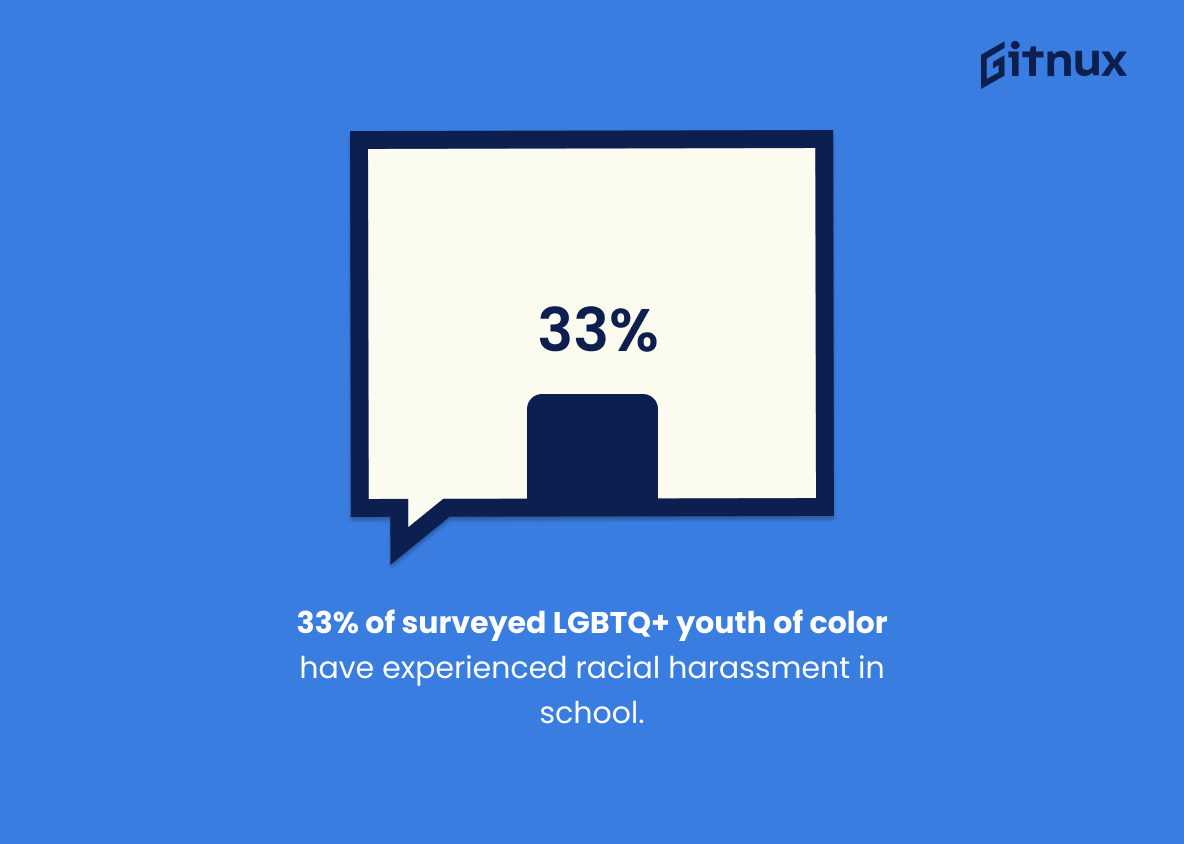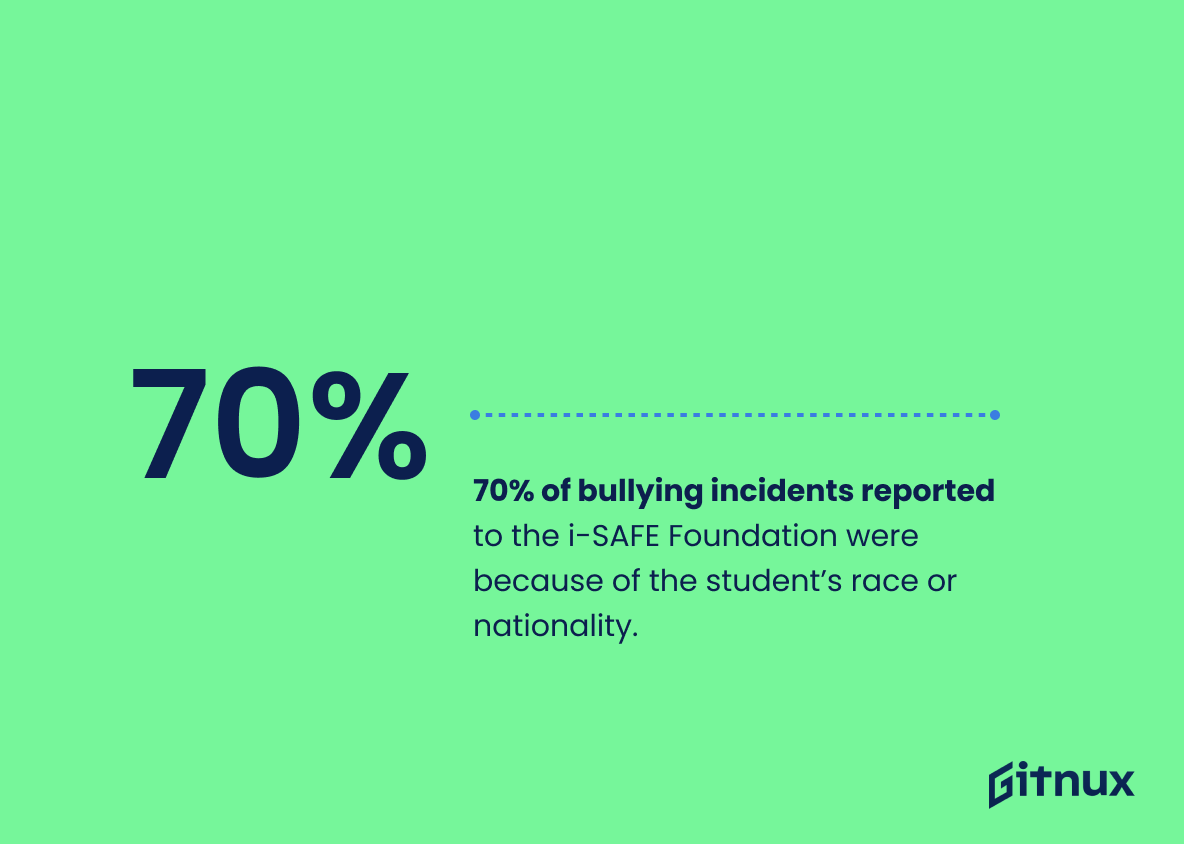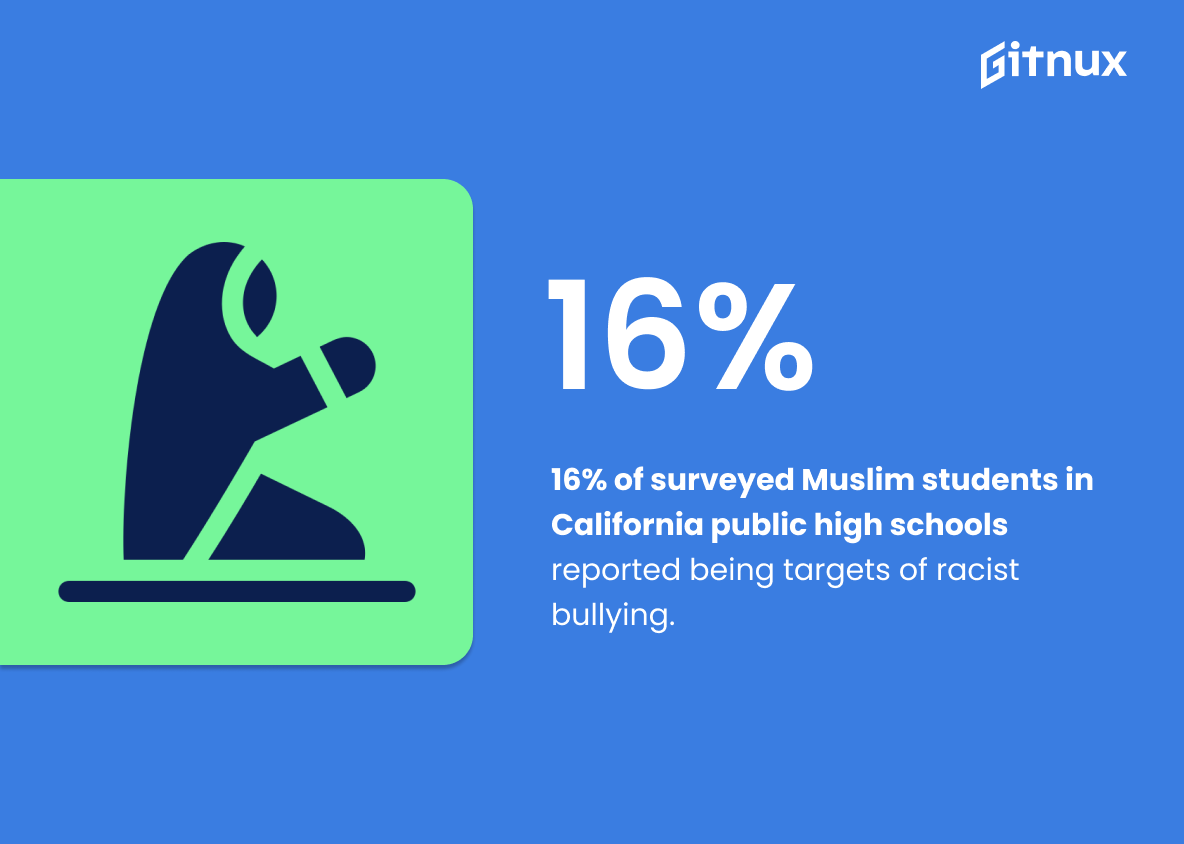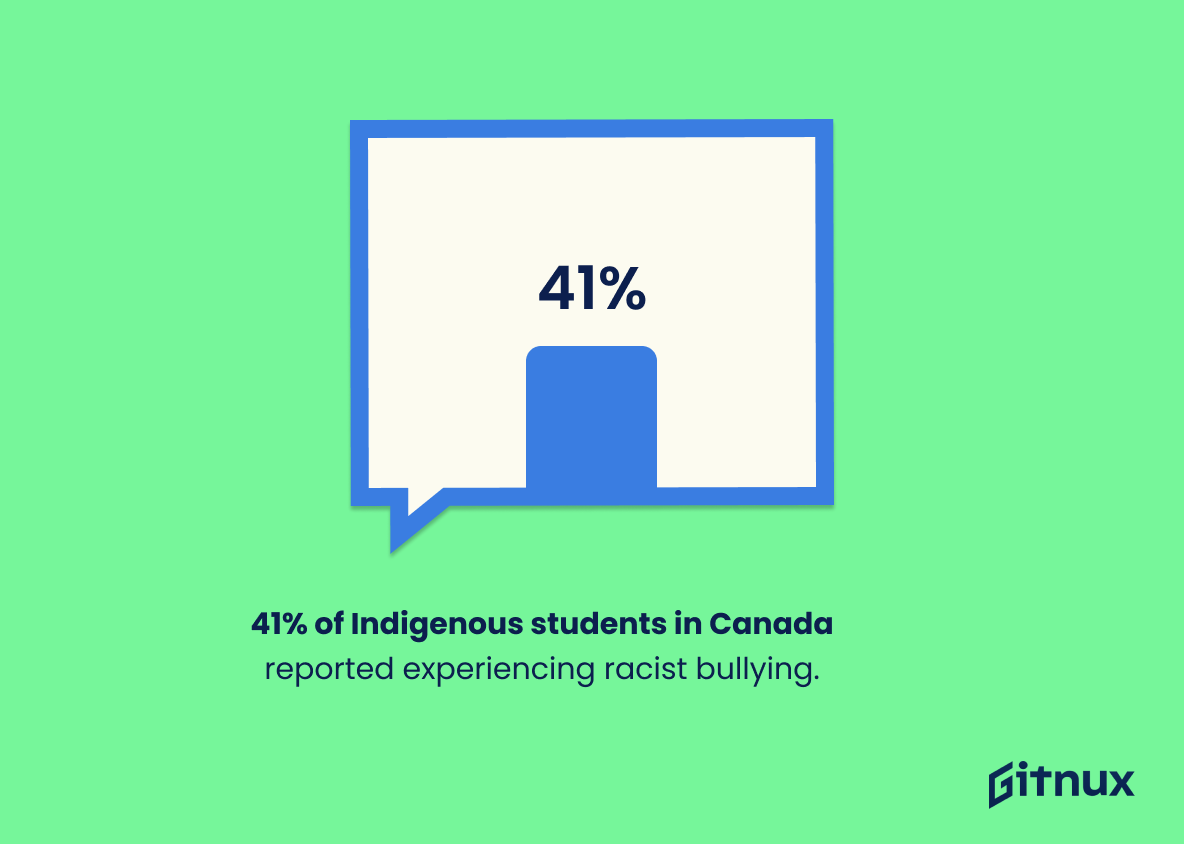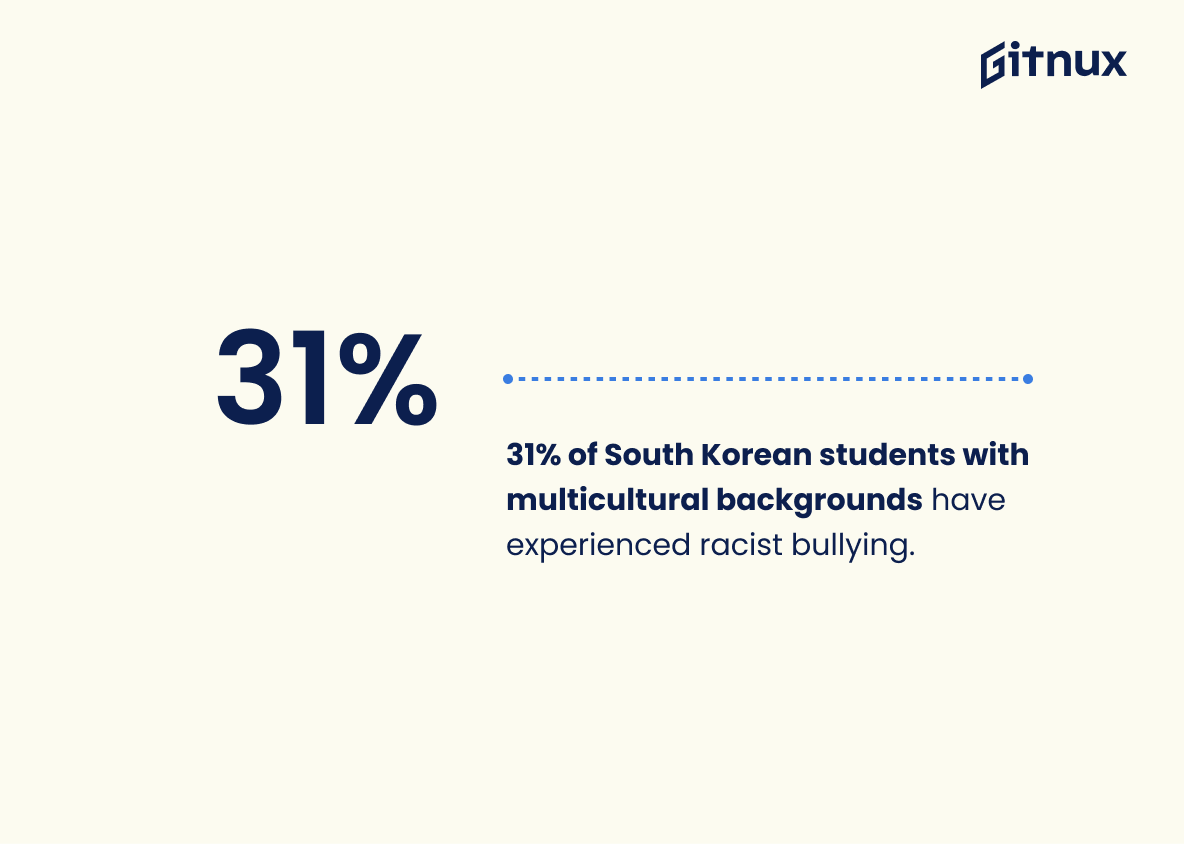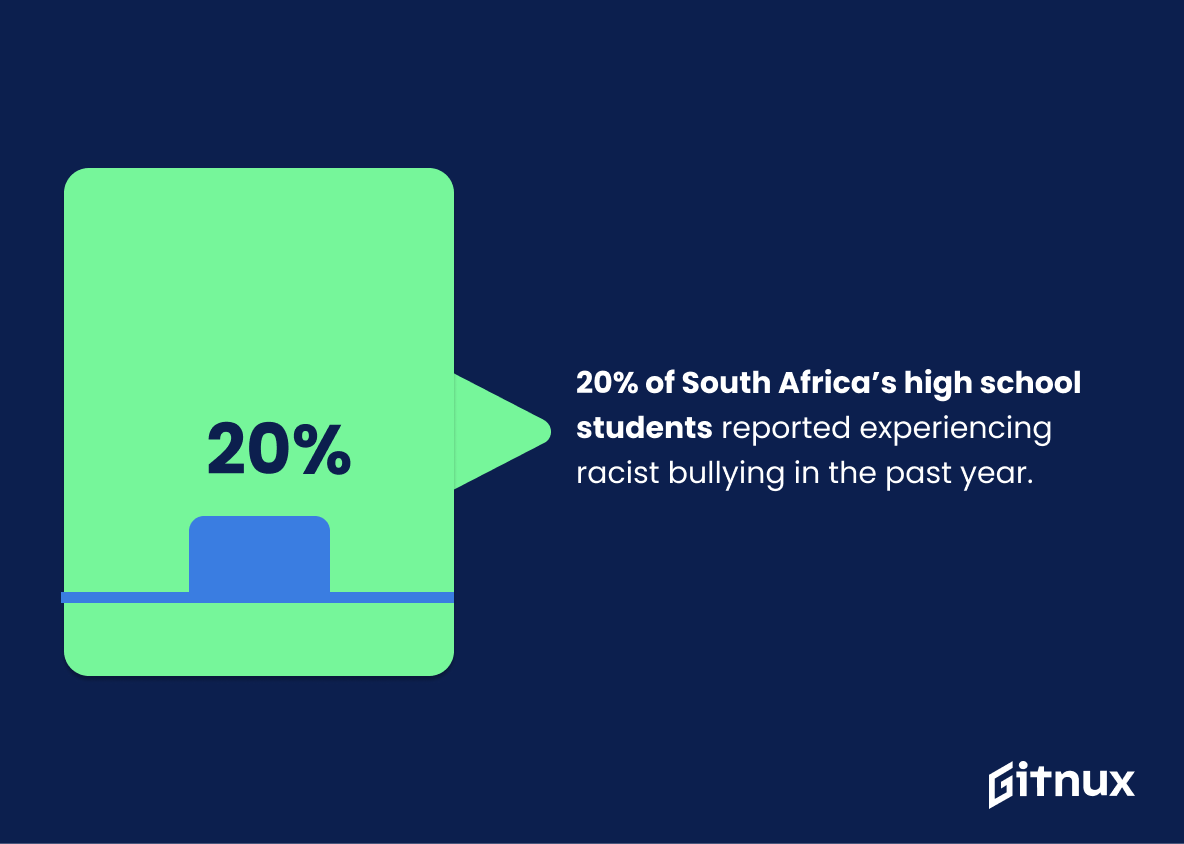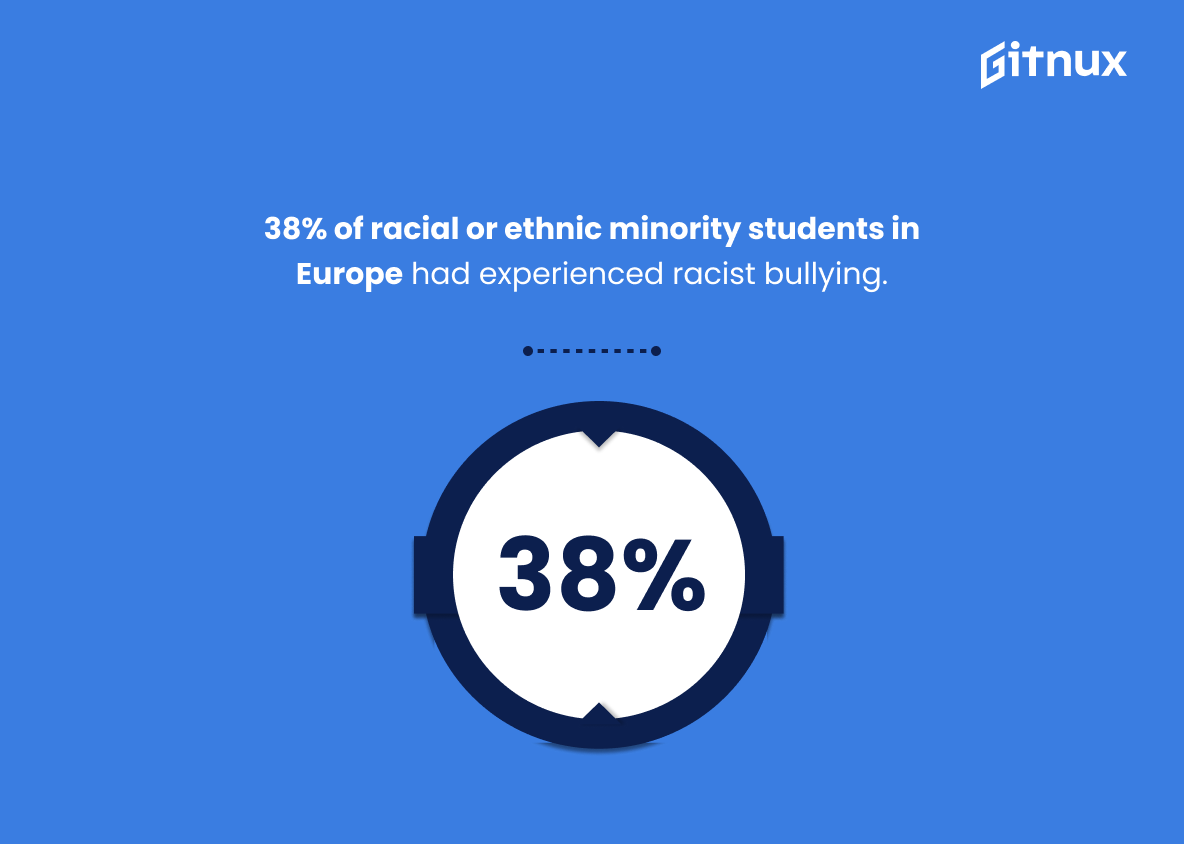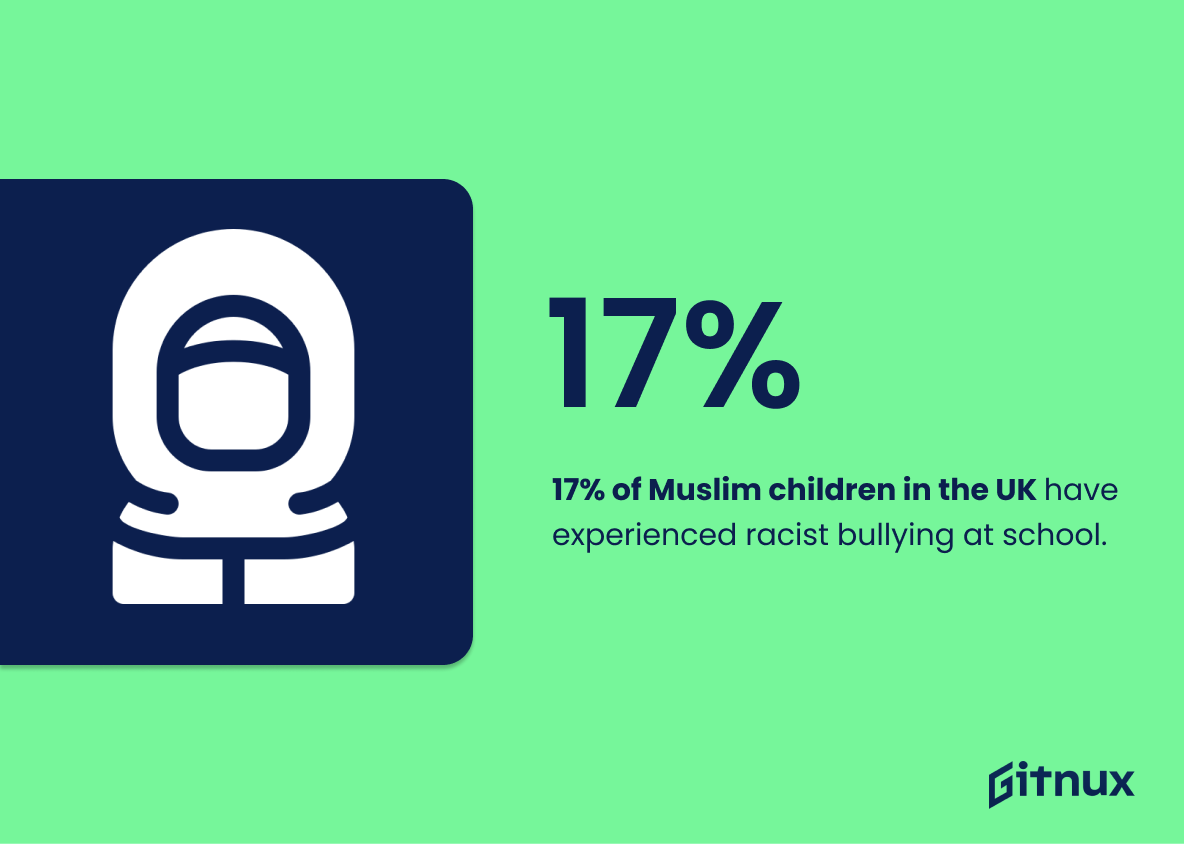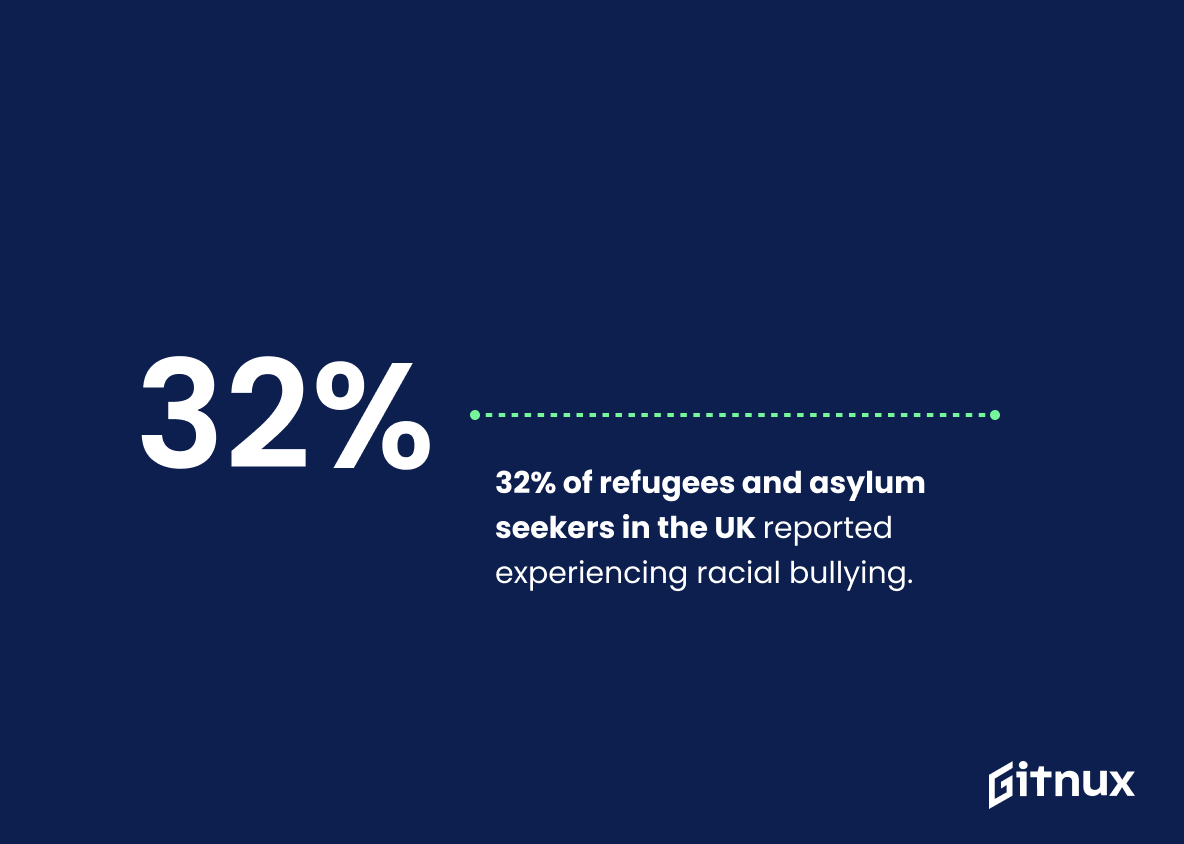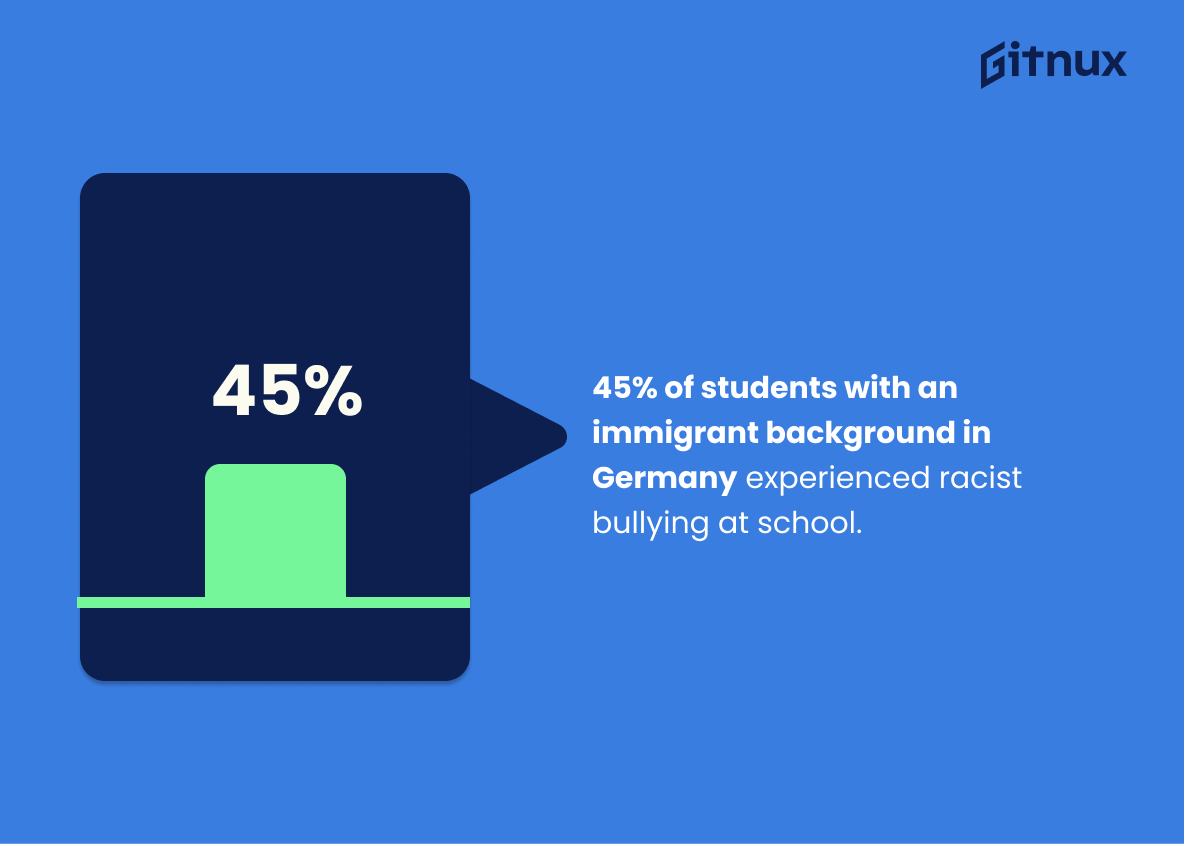Racist bullying is a serious issue that affects students of all ages around the world. According to recent statistics, 1 in 5 students aged 12-18 experienced bullying in the US, with 33% reporting it was about their race or ethnicity. In 2017, 25% of Black and 22% of Hispanic students reported experiencing racist bullying at school in the US. 11% of students in England and Wales experience racist bullying while 39% of surveyed Chinese Americans have experienced racism due to COVID-19.
Additionally, 33% LGBTQ+ youth color report racial harassment at school and 70 percent incidents reported to i-SAFE Foundation were because student’s race or nationality. 24 percent worldwide population has been bullied online for being racially different whereas 9 percent Australian children faced similar issues as well as 16 percent Muslim California public high schools’ student who also got targeted by bullies based on their skin color or religion. 41 % Indigenous Canadian kids are victims too along with 31 % South Korean multicultural backgrounded people; 20 % South African High Schoolers; 38 % European minority ethnic group members; 27 % black American youths ; 13 Maori New Zealanders ; 17 UK Muslims & 23 BAME British citizens . Lastly 45 German immigrants had gone through such experiences according to these stats gathered from various sources like NCES ,Youth Truth Survey , Institute Of Education London etc
This statistic is a stark reminder of the prevalence of racist bullying in the US, particularly among students aged 12-18. It highlights the need for greater awareness and action to be taken to address this issue, as it is clear that a significant proportion of bullying is motivated by race or ethnicity.
11% of students in England and Wales experience racist bullying in school.
This statistic is a stark reminder of the prevalence of racism in schools across England and Wales. It highlights the need for greater awareness and action to be taken to tackle this issue, and serves as a call to arms for those who are in a position to make a difference.
Racist Bullying Statistics Overview
39% of surveyed Chinese Americans have experienced racist bullying due to COVID-19.
This statistic is a stark reminder of the reality that many Chinese Americans have faced due to the COVID-19 pandemic: racism and bullying. It serves as a powerful illustration of the discrimination and prejudice that has been directed at this community, and highlights the need for greater awareness and action to combat this issue.
33% of surveyed LGBTQ+ youth of color have experienced racial harassment in school.
This statistic is a stark reminder of the reality that many LGBTQ+ youth of color face in school. It highlights the prevalence of racial harassment in educational institutions and the need for greater awareness and action to combat it. This statistic is a call to action for educators, administrators, and parents to take a stand against racism and create a safe and inclusive environment for all students.
70% of bullying incidents reported to the i-SAFE Foundation were because of the student’s race or nationality.
This statistic is a stark reminder of the prevalence of racism in bullying incidents. It highlights the need for greater awareness and action to be taken to address this issue, as it is clear that race and nationality are major factors in bullying. It is a call to action for those in positions of power to take steps to ensure that all students are treated with respect and dignity, regardless of their race or nationality.
24% of the worldwide population has experienced racist bullying online.
This statistic is a stark reminder of the prevalence of racist bullying online, highlighting the need for greater awareness and action to combat this issue. It serves as a call to action, demonstrating the urgency of the situation and the need for individuals, organizations, and governments to take steps to address this problem.
9% of Australian school-aged children have experienced racist bullying.
This statistic is a stark reminder of the prevalence of racism in our society and the need to address it. It highlights the fact that racism is still a problem in our schools and that it is having a detrimental effect on our children. It is a call to action to ensure that our schools are safe and inclusive environments for all students, regardless of their race or ethnicity.
16% of surveyed Muslim students in California public high schools reported being targets of racist bullying.
This statistic serves as a stark reminder of the prevalence of racism in California public high schools. It highlights the fact that Muslim students are disproportionately targeted by racist bullying, and that this is an issue that needs to be addressed. It is a call to action for educators, administrators, and parents to take steps to ensure that all students feel safe and respected in their school environment.
41% of Indigenous students in Canada reported experiencing racist bullying.
This statistic is a stark reminder of the prevalence of racism in Canada, and the need for greater awareness and action to combat it. It highlights the fact that Indigenous students are disproportionately affected by racist bullying, and that more must be done to ensure their safety and well-being. This statistic serves as a call to action for all of us to take a stand against racism and to create a more inclusive and equitable society.
31% of South Korean students with multicultural backgrounds have experienced racist bullying.
This statistic is a stark reminder of the prevalence of racism in South Korea, and how it is affecting the lives of students with multicultural backgrounds. It highlights the need for greater awareness and action to be taken to combat racism and its effects on those who experience it. It is a call to action for those who are in a position to make a difference, and to ensure that all students are able to feel safe and respected in their learning environment.
20% of South Africa’s high school students reported experiencing racist bullying in the past year.
This statistic is a stark reminder of the prevalence of racism in South Africa’s high schools. It highlights the need for greater awareness and action to be taken to address this issue, and serves as a call to action for those who are in a position to make a difference.
38% of racial or ethnic minority students in Europe had experienced racist bullying.
This statistic is a stark reminder of the prevalence of racism in Europe, and the need for greater awareness and action to combat it. It highlights the fact that racism is still a major issue in the region, and that it is disproportionately affecting minority students. This is an issue that needs to be addressed urgently, and this statistic serves as a call to action for those who are in a position to do something about it.
17% of Muslim children in the UK have experienced racist bullying at school.
This statistic is a stark reminder of the prevalence of racism in the UK, particularly in schools. It highlights the need for greater awareness and action to be taken to ensure that all children, regardless of their faith, are able to attend school without fear of bullying or discrimination. It is a call to action for all of us to work together to create a more inclusive and tolerant society.
21% of international students in the US reported experiencing racial or ethnic harassment on campus.
This statistic is a stark reminder of the prevalence of racism and ethnic discrimination on college campuses. It highlights the need for universities to take proactive steps to ensure that all students, regardless of their background, feel safe and respected on campus. This statistic is a call to action for universities to take a stand against racism and ethnic discrimination and to create an environment where all students can thrive.
32% of refugees and asylum seekers in the UK reported experiencing racial bullying.
This statistic is a stark reminder of the prevalence of racial bullying among refugees and asylum seekers in the UK. It highlights the need for greater awareness and action to be taken to protect these vulnerable individuals from such discrimination. It also serves as a call to action for those in positions of power to take steps to ensure that all people, regardless of their background, are treated with respect and dignity.
45% of students with an immigrant background in Germany experienced racist bullying at school.
This statistic is a stark reminder of the prevalence of racism in Germany’s educational system. It highlights the need for greater awareness and action to be taken to ensure that all students, regardless of their background, are able to learn in a safe and supportive environment. It is a call to action for educators, parents, and policy makers to take a stand against racism and ensure that all students are treated with respect and dignity.
Conclusion
Racist bullying is a serious issue that affects students of all ages and backgrounds around the world. The statistics presented in this blog post demonstrate how pervasive it is, with 1 in 5 students experiencing some form of racial or ethnic harassment at school. This number increases to 25% for Black and 22% for Hispanic students in the US, while 39% of Chinese Americans have experienced racist bullying due to COVID-19. Additionally, 33% of LGBTQ+ youth of color reported being targets of racial harassment at school and 70% percentof incidents reported to i-SAFE Foundation were because of race or nationality.
The problem extends beyond national borders as 24 % worldwide population has experienced online racism while 9%, 16%, 20%, 27%, 31%, 38%, 41 % 45 % respectively from Australia , California public high schools , South Africa’s high school student , BAME (Black Asian Minority Ethnic) background children from UK , South Korean Students with multicultural backgrounds & International Student studying In USA & Refugees/Asylum seekers living In UK also faced similar issues .
It’s clear that more needs to be done on an international level to address this growing problem so that everyone can feel safe regardless their ethnicity or cultural background.
References
0. – https://www.www.equineteurope.org
1. – https://www.dera.ioe.ac.uk
2. – https://www.www.refugeecouncil.org.uk
3. – https://www.www.nafsa.org
4. – https://www.bullyingnoway.gov.au
5. – https://www.www.dji.de
6. – https://www.journals.plos.org
7. – https://www.www.mcb.org.uk
8. – https://www.kostat.go.kr
9. – https://www.www.adl.org
10. – https://www.www.isafeventures.com
11. – https://www.stopaapihate.org
12. – https://www.www.glsen.org
13. – https://www.www150.statcan.gc.ca
14. – https://www.nces.ed.gov
15. – https://www.ca.cair.com

